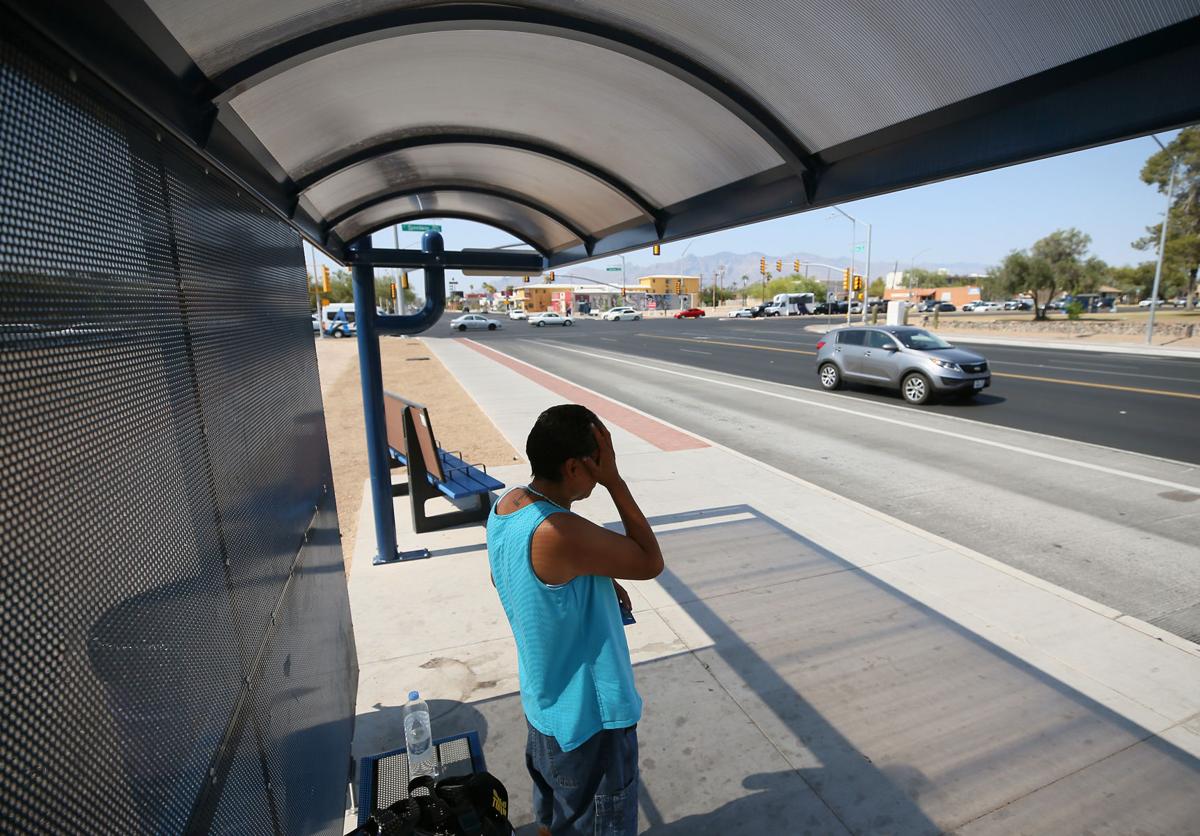Cindy Valdez had just moved to Tucson when the 42-day Sun Tran bus strike started in the summer of 2015.
Like many riders, she had depended on the bus to get to her job and had to turn to cabs and other means during the shutdown. She said the experience left a bad taste in her mouth, and she only recently started using the bus regularly again.
“I know I can’t afford taking cabs anymore,” she said.
Monthly ridership data analyzed by the Road Runner show that Valdez was far from alone in abandoning buses in the wake of the strike. From an average monthly ridership of 1.63 million for the first five months of 2015, average ridership for the same period in 2017 has fallen over 17 percent to 1.34 million.
Because fares went up at the start of the year, revenues actually increased over the five-month period last year and average per-passenger revenues are at their highest over the nearly three-year period.
The distrust cited by Valdez is widespread among Sun Tran customers, according to the Tucson Bus Riders Union’s Brian Flagg.
He said the way the system is funded — largely with city general fund dollars — makes it difficult to adequately support the bus system and avoid labor conflicts. That’s why he and others have advocated for a so-called metropolitan public transit authority, which would have the ability to levy property taxes to fund the local transit system.
City officials have raised concerns about that alternative model, saying it would require significant legislative changes to be viable and would compete for scarce tax dollars with other local jurisdictions.
But the strike is only a part of the picture. Another key trend over the last two years has been consistently low gas prices, which research shows impact transit usage.
In the months leading up to the strike, the average price for a gallon of regular gasoline in the region of which Arizona is a part was around $3.09, according to data from the U.S. Energy Information Administration. Since the strike through June, that average was $2.66, though prices have been inching up in recent months.
“One of the things we don’t have any control over is the cost of gas,” said Margot Garcia, chair of the city’s Transit Task Force. “If the cost of gasoline goes down, people tend to drive cars again.”
“If we’re losing ridership to vehicles, we’re not going to get that back in a period of low gas prices,” the Pima Association of Government’s Jim DeGrood said.
Art Guzzetti, vice president for policy with the American Public Transportation Association, said Tucson is not alone in seeing flat or declining ridership, which has been a national trend in recent years, and agreed that gas prices are a key factor. Nationwide, public transit usage reached a modern peak in 2014, he said.
Transit systems are also having to compete with rising expectations of quick, push-of-a-button service, as provided by Lyft and other app-mediated transportation services.
“It’s an on-demand world, and there’s a trend for providing more frequent service,” he said, adding that voters across the country have recently backed billions of dollars in additional transit funding.
Pat Richter, Sun Tran’s marketing director, acknowledged the 2015 strike had an impact, but said that — when stacked up against similar cities — Sun Tran’s ridership figures “compare pretty favorably.”
Beyond gas prices, Richter said modest economic gains in recent years have brought car ownership within reach of more people.
Richter also touted recent improvements in the Sun Tran system that could counter the downward trend over the long term. Those include adding to the system’s frequent transit network, which features buses that arrive every 15 minutes in major corridors, and a number of new bus stop shelters put in by the city and county.
But if there’s another strike after the newly approved contract expires in three years, passengers who have been won back, like Vasquez, may look for alternatives again.
“I’m already starting to consider it,” she said of the possibility of trying to buy a car.





